War leaves scars, not just on the body but on the mind and soul. One photograph from the Battle of Flers-Courcelette has come to epitomize the unseen wounds of World War I.
This haunting image captures a soldier in a trench, his eyes wide and vacant, seemingly stripped of all humanity by the horrors surrounding him.
Though his name remains unknown, the soldier’s expression tells a story far beyond the battlefield—a story of trauma, madness, and the devastating psychological toll of war.
What the photo portrayed
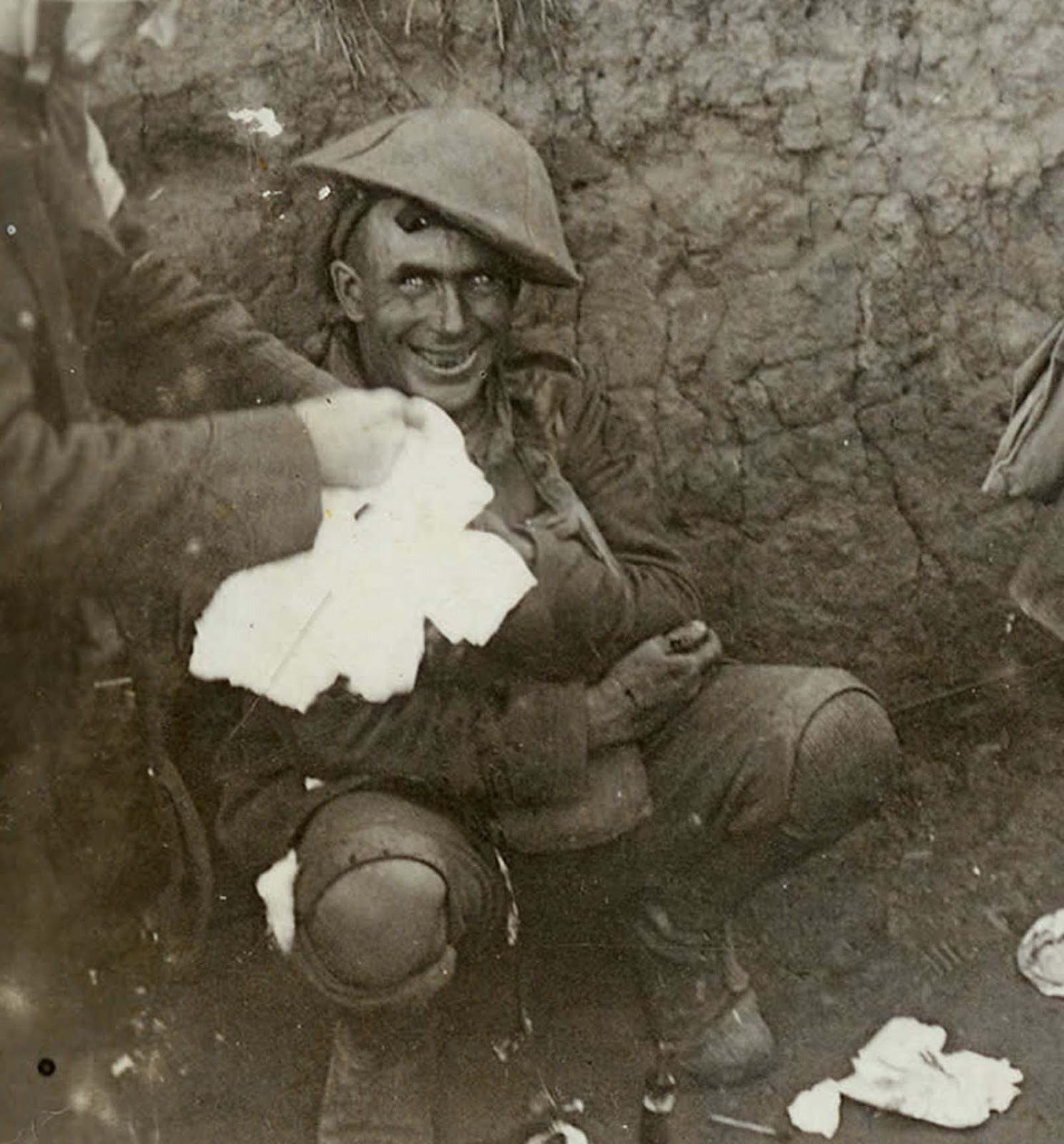
At first glance, the image appears to be just another black-and-white snapshot from the trenches of WWI. But look closer, and you’ll see that it captures something far more profound.
The soldier’s face is smeared with the grime of battle, his once-tanned skin now darkened by gunpowder and dirt. His teeth, decaying from poor nutrition and lack of proper hygiene, are exposed in what could be mistaken for a grin.
But it’s his eyes that draw you in—wide, unfocused, and filled with a kind of despair that defies description. They seem to stare into the abyss, reflecting a mind shattered by the horrors of war.
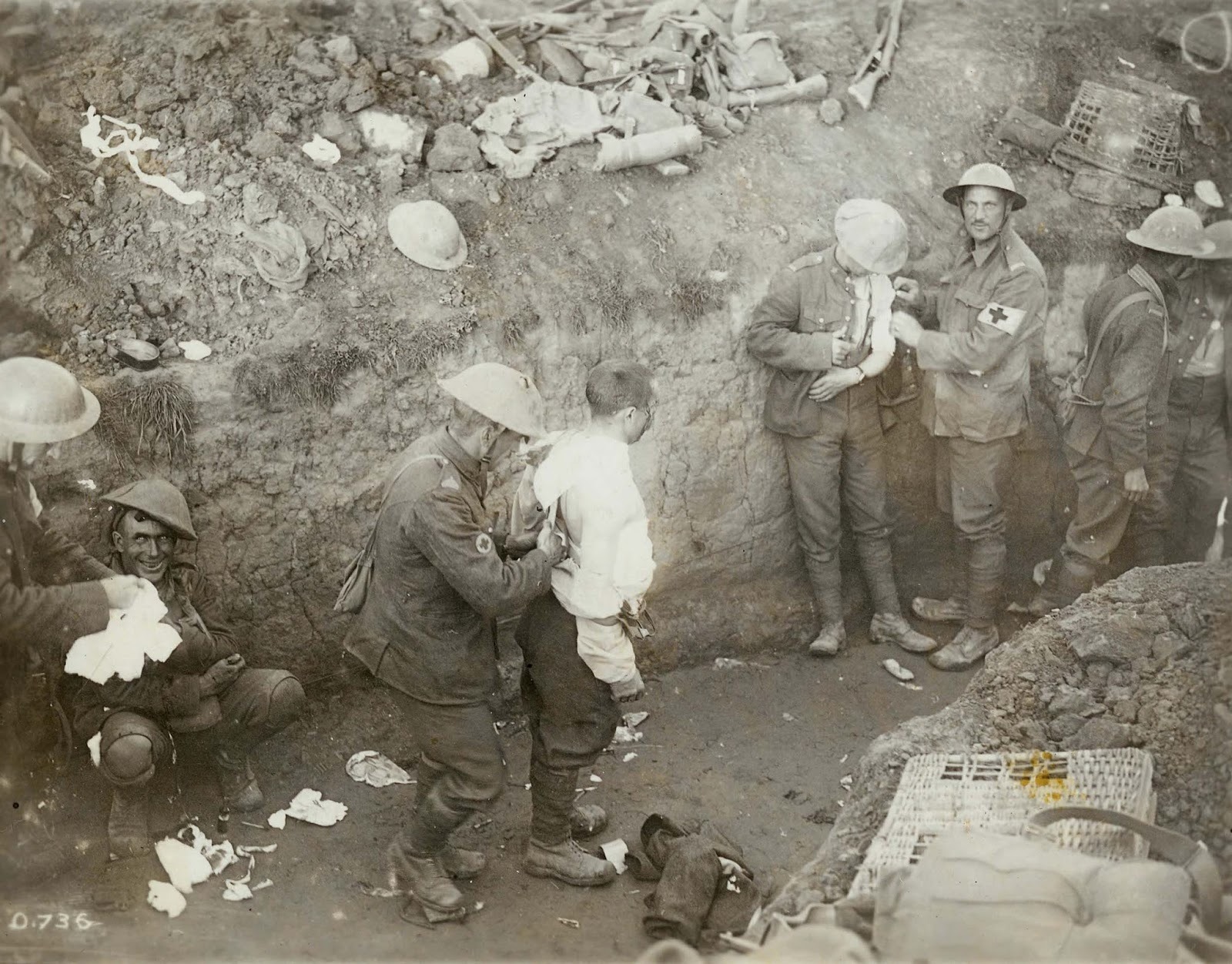
Some have described his expression as “mad,” a victim of shell shock, while others have gone so far as to say they see a demon lurking in his gaze.
Yet, this “madness” was not unique to this soldier; it was a common fate for many men in the trenches, their minds unable to cope with the relentless bombardment and carnage.
The making of the photo

The photograph commonly referred to as “the shell-shocked soldier” has been widely shared, colorized, and discussed on social media and in blogs. However, the proper title of this image is “Dressing Wounded in Trench During the Battle of Courcelette.”
It was captured in September 1916 by Ivor Castle, an official First World War photographer for Canada. This photograph, cataloged as PA 00909 and identified by Item ID number 3395804, belongs to the Library and Archives Canada (LAC).
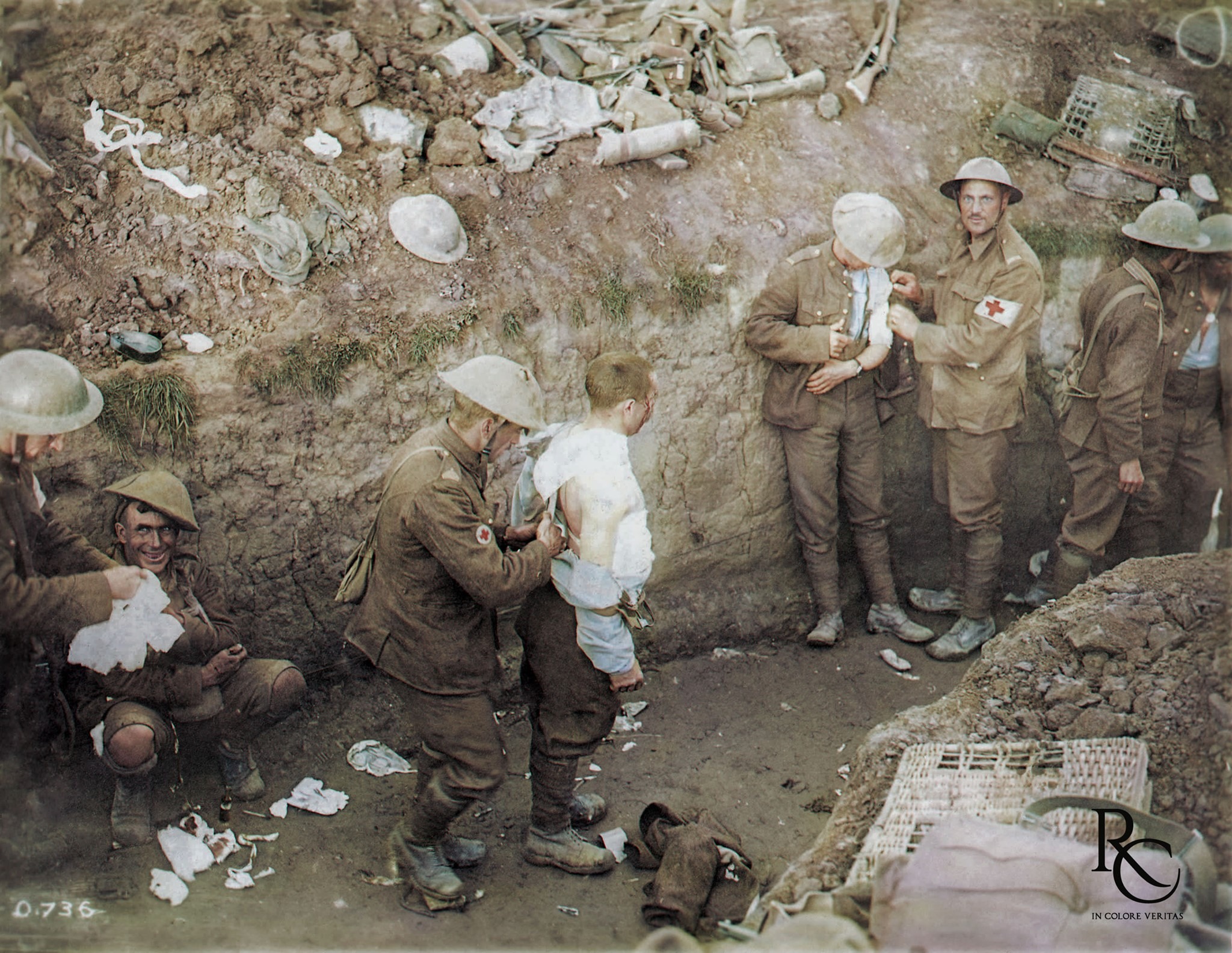
The photograph was captured during the Battle of Flers-Courcelette. This battle, fought between September 15 and 22, 1916, involved the French Sixth Army, the British Fourth Army, and the Reserve Army against the German 1st Army.
Castle’s photograph has become a symbol, often used to represent the psychological toll of war. However, it’s essential to remember the broader context in which this image was taken and to approach such interpretations with caution.
The historical context
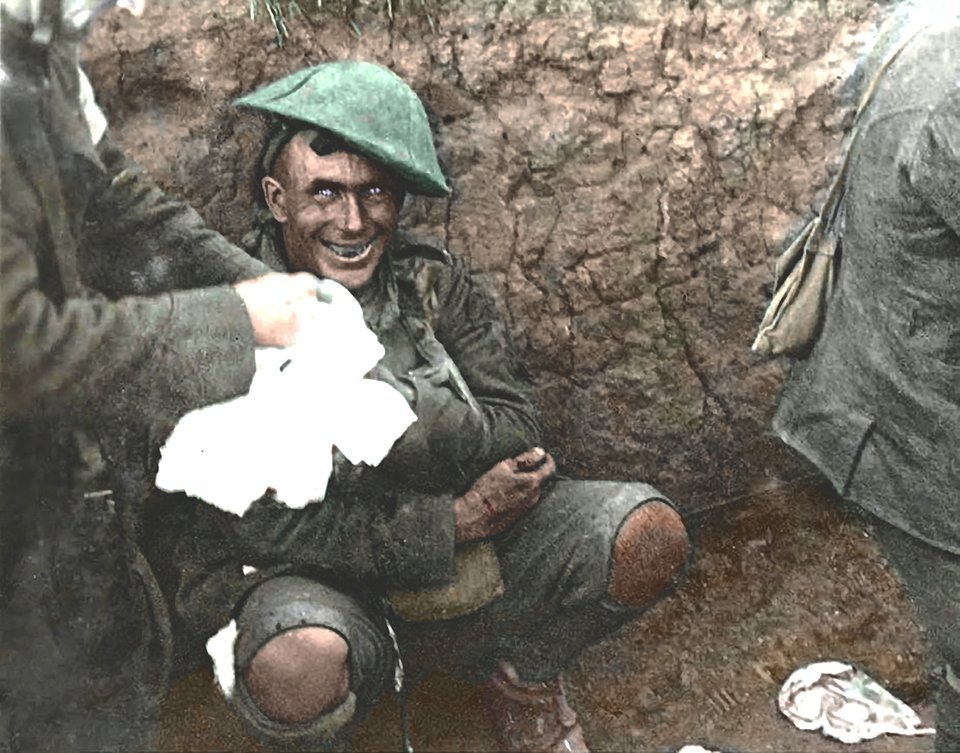
To fully understand the significance of this photo, one must appreciate the context in which it was taken. The Battle of Flers-Courcelette was a crucial part of the larger Somme Offensive, a campaign that epitomized the brutal stalemate of trench warfare during WWI.
When the war began in August 1914, few could have imagined that it would drag on for years, claiming millions of lives and leaving countless more physically and mentally scarred.
The trenches became a living nightmare, with soldiers facing the constant threat of death from artillery shells, machine guns, and poison gas.
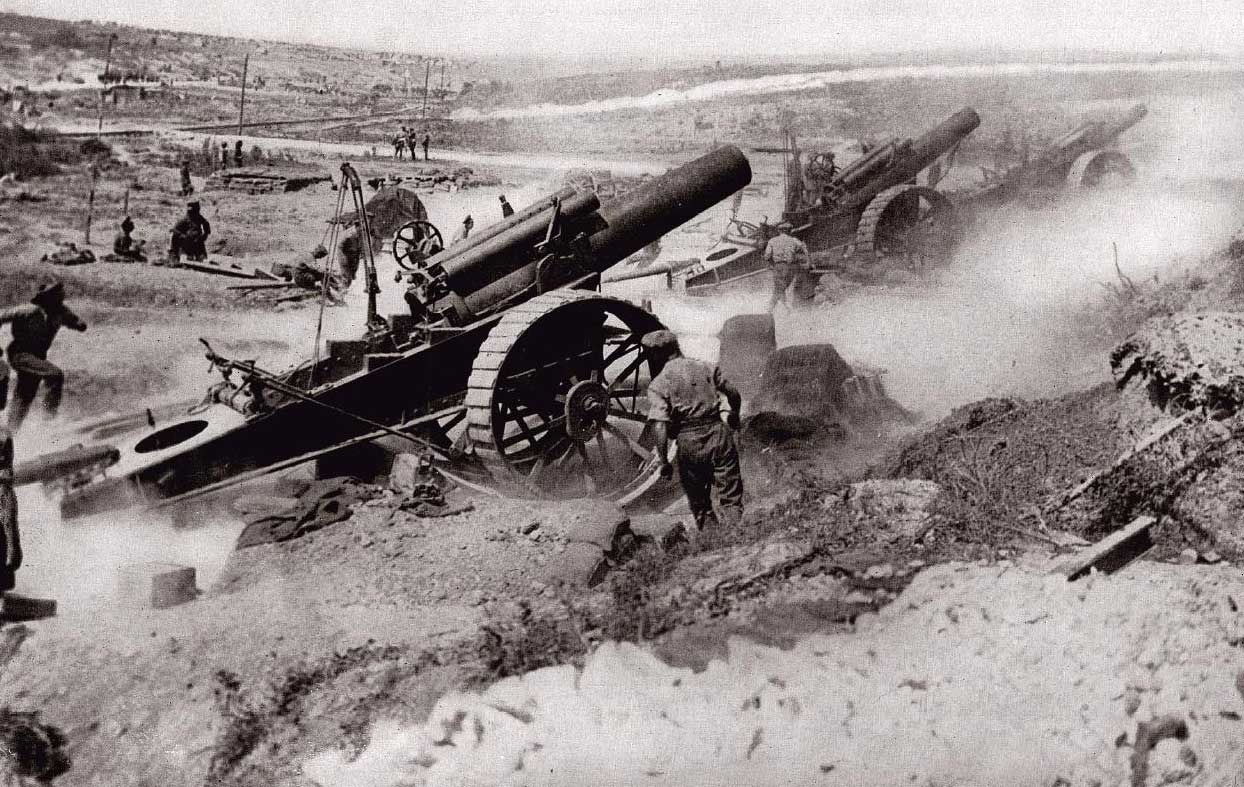
The Battle of the Somme alone resulted in over a million casualties, a staggering number that included those killed, wounded, or suffering from shell shock.
Shell shock, a term coined by the soldiers themselves, was first observed early in the war when men began to exhibit symptoms that had no apparent physical cause. These symptoms ranged from fatigue, tremors, and confusion to severe anxiety, nightmares, and even paralysis.
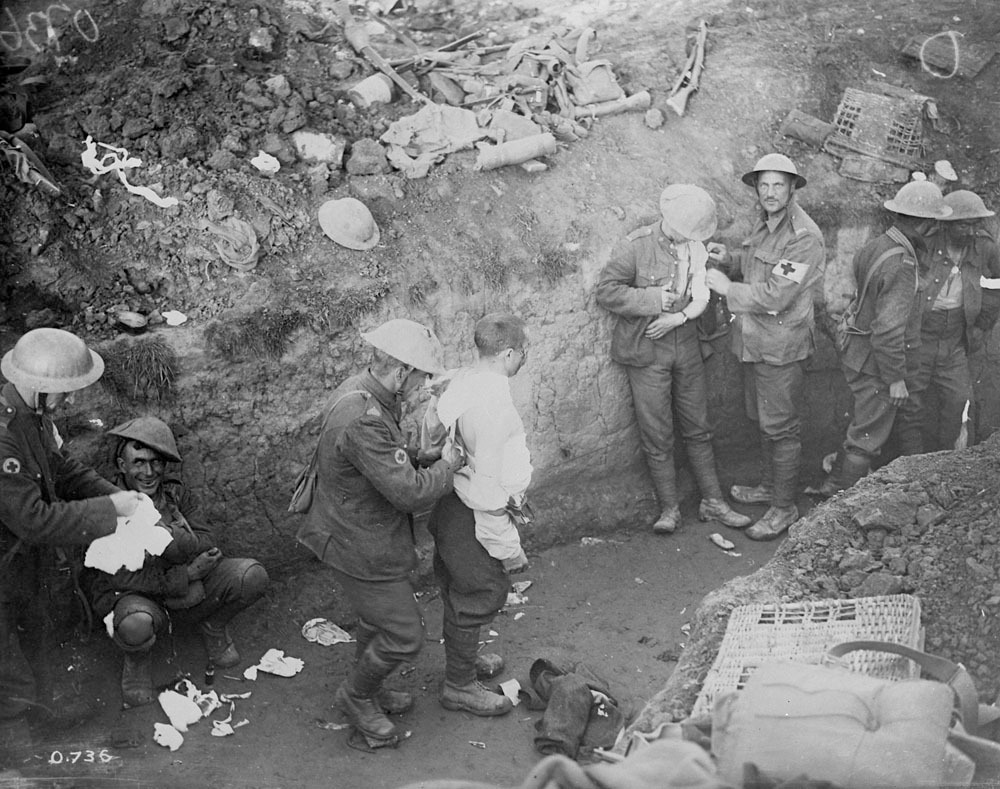
The condition was initially thought to be the result of physical damage to the nervous system caused by the concussive force of exploding shells.
However, it soon became clear that many soldiers suffering from shell shock had never been near an explosion. Instead, it was the relentless stress and trauma of combat that pushed these men beyond the limits of human endurance.
The shell shock condition
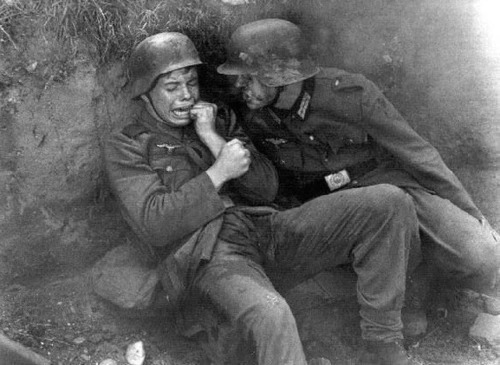
Shell shock quickly became one of the most pressing medical issues of the war, with thousands of soldiers incapacitated by the condition. At its height, it was estimated that up to 40% of soldiers on the front lines were affected.
The British Army initially treated shell shock with understanding and compassion, evacuating soldiers back to Britain for treatment. However, as the war dragged on and the number of cases continued to rise, attitudes began to shift.
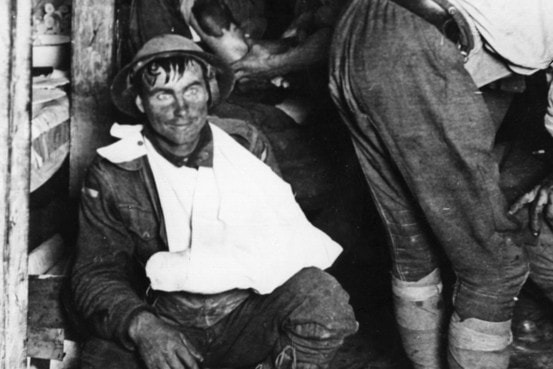
The military leadership, under pressure to maintain troop numbers, started to view shell shock less as a medical condition and more as a sign of cowardice or malingering.
Soldiers who could no longer function were often subjected to harsh disciplinary measures, including solitary confinement, electric shock treatment, and even execution for desertion or cowardice.

While the term “shell shock” may no longer be used in modern medical or military discourse, the condition it described is now recognized as an early form of what we know today as Post-Traumatic Stress Disorder (PTSD).
The trauma of combat has always existed, but it was the industrial-scale slaughter of WWI that first brought it to widespread attention.
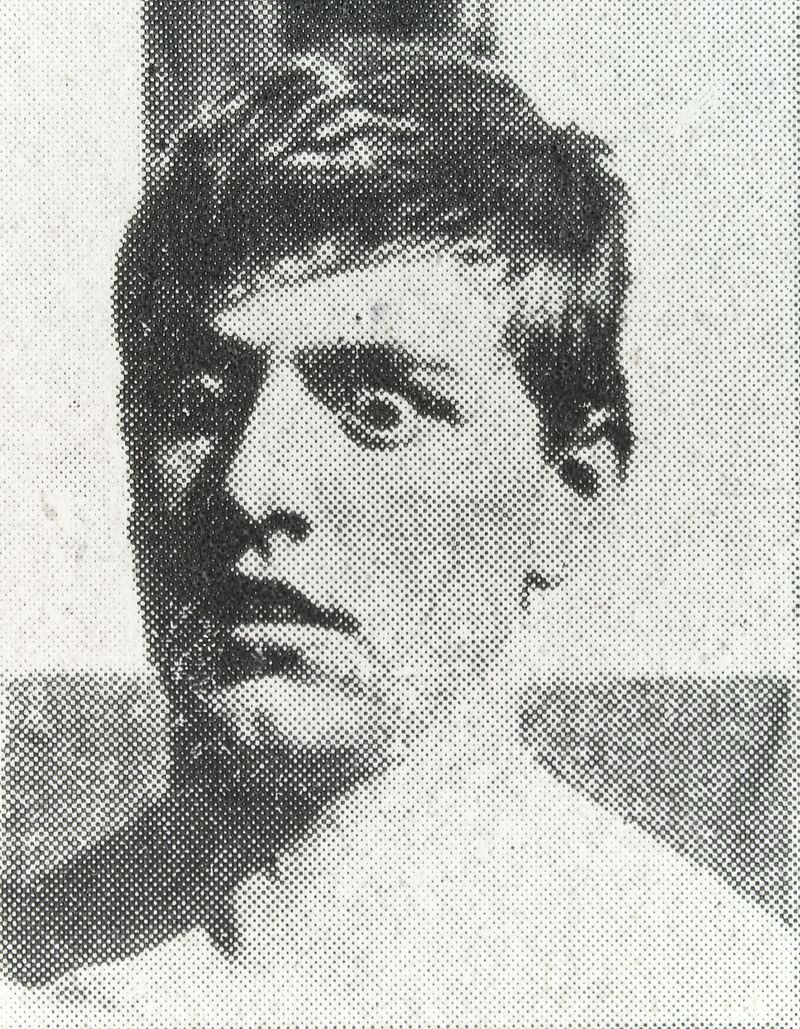
The legacy of shell shock lives on in the countless veterans who have struggled with the psychological aftermath of war long after the guns have fallen silent.
While the photograph of that unknown soldier in the trenches may only be a single frame in the vast tapestry of WWI, it captures the essence of a generation lost to the madness of war.


